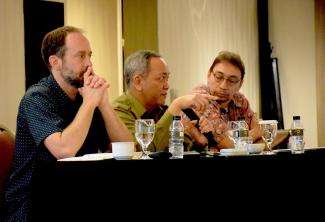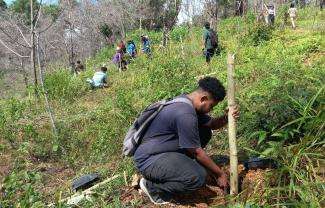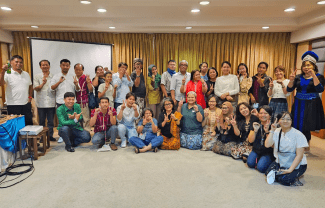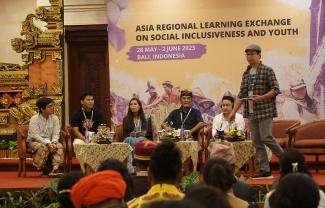Around thirty percent of the tropical forests in tropical countries are in the process of becoming managed by the local community. In the Maya Biosphere Reserve in Guatemala, for example, nine community concessions manage more than four hundred thousand hectares of forest that are of high commercial value. During the past fifteen years, the rate of deforestation has slowed, if compared to the core zone of protected forests surrounding this territory.
Nearly all the wood production in the Mexican industry originates from traditional forests, where around 3,000 community members hold the rights of management to nearly two thirds of the national forests. Other countries in Latin America, from Nicuaragua, Brazil and Peru are also increasing the gross area being managed by communities in protected forest areas of high economic value.
“In Peru the traditional system of leadership provides the basis for forest management. As they are already in control of the harvesting and production of high value wood they earb five times the amount of profit,†Ben Hodgdon of Rainforest Alliance explained to the national meeting ‘Learning from Mesoamerika, Towards the Cultivation of Native Forests by traditional communities in Indonesia'. (Jakarta, 15th March 2016, at a meeting of the Rainforest Alliance, AMAN and Samdhana Institute.)
In Indonesia itself there have already been a number of efforts to provide examples (Community Forest Enterprise/CFE models), such as the policy targeting 12.7 hectares for reserve areas for social forests. At the same time as protecting these forestry areas (as is shown in PIAPS) the policy mainly involves allocation of areas for HD/HTR and HKM as well as several other partnership models. For example the cultivating of forest by traditional communities in Papua under the umbrella of PERDASUS 23 in 2008 enables sustainable forestry management in Papua Province, which has now already encompasses around 50,000 hectares for 14 concessions that have been given permits by the government for competitive commodities.
Championing good community forestry policies requires a young person with a strong business orientation, preferably from the community involvd. As it will no longer be oriented to the usual products, the approach should be adjusted to the territory including services for mentmanage within each particular region. This approach is no longer a community one but rather territorial.
“So one area of competence must be set up for community forestry within which it can manage the region's economy creating multiple products which can be combined with services to the environment,†Abdon Nababan from AMAN explained.
Aware that a large part of social forestry initiatives in Indonesia designed by the government do not proceed optimally, because of legal complications and various technical and social obstacles from within each community group and specific location, the Director of Preparation of Social Forestry Areas from the Director General of Social Forestry and Environmental Partnerships, KLHK, Wiratno, explained there is a dependency among some community groups upon their partners. “Social Forestry will not always be a solution if there is no strong support from the grassroots level,†he said.
This workshop was purposely designed to enable learning from other territories, not only within the Asian region, but also from Meso-America, which is famous for the speed with which traditional communities have taken over management of their forests, where 225 million hectares of forest are already cultivated by traditional communities, 80% of which remain below the poverty line.




